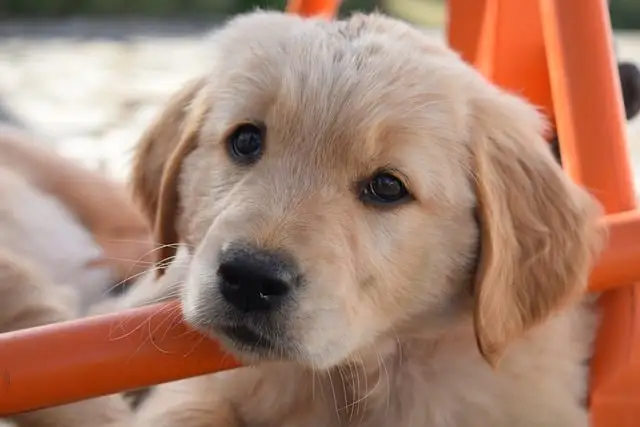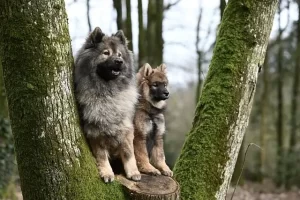The arrival of a puppy in our lives is always a moment of joy and anticipation. However, along with all that cuteness and fun comes the responsibility of training and educating the new family member. Puppy training not only establishes the foundations for a healthy and harmonious relationship between owner and dog, but also helps ensure the safety and well-being of the animal and the community around it.
In this detailed guide, we will explore step by step the best practices for training a puppy, especially aimed at busy individuals seeking efficient techniques to achieve results in a short amount of time. With clear instructions and practical examples, you’ll be ready to tackle the challenges of training your puppy with confidence and success.
If you’re ready to embark on this journey of learning and growth alongside your puppy, keep reading to discover how to create a harmonious and rewarding coexistence with your new canine best friend.
With this introduction, we establish the importance of puppy training and highlight the promise to provide practical and effective guidance to the readers. By mentioning the benefits of training such as safety, harmony, and strengthening the emotional bond, we help readers understand why investing time and effort into training their puppies is essential. At the same time, we convey the idea that this guide will be a reliable source of information and guidance to assist them throughout the training process.
Importance of Puppy Training:
Before delving into specific training techniques, it’s crucial to understand why puppy training is so important. Contrary to what some may think, training isn’t just about teaching fun tricks like sitting and shaking paws. In fact, puppy training plays a crucial role in the behavioral and emotional development of the animal. Here are some reasons why training is essential:
- Safety: A well-trained puppy is less likely to engage in dangerous behaviors, such as running into the street or chewing on hazardous objects.
- Harmonious coexistence: Training helps establish clear rules and expectations for the puppy’s behavior, facilitating a peaceful and happy coexistence between the dog and its family.
- Emotional bond: Puppy training creates opportunities for positive interactions between the owner and the dog, strengthening the emotional bond between them.
- Prevention of future problems: By addressing unwanted behaviors early on, puppy training helps prevent more serious behavioral issues in the future.
- Mental stimulation: Training challenges the puppy’s brain, providing mental stimulation and preventing boredom and anxiety.
Preparing for Training:
Before starting your puppy’s training, it’s important to be well-prepared and establish a solid foundation. Here are some important steps to consider:
- Establish a routine: Puppies thrive on predictability, so create a consistent routine for feeding, sleeping, playtime, and training. This will help the puppy understand what to expect and when.
- Create a safe space: Ensure your puppy has a safe and comfortable space to relax when needed. This may include a soft bed, appropriate toys, and access to fresh water.
- Gather necessary supplies: Before bringing your puppy home, make sure you have all the essential supplies, such as food and water bowls, collar and leash, training toys, and tasty treats.
- Educate yourself: Dedicate time to learn about the best puppy training practices, including positive training methods and reinforcement techniques. There are many resources available, from books and videos to group training classes.
- Set clear goals: Before beginning training, identify specific behaviors you want to teach your puppy. This may include things like sitting, staying, coming when called, and walking on a leash without pulling.
With proper preparation, you’ll be ready to begin training your puppy with confidence and effectiveness.
Effective Training Methods:
There are several approaches and techniques to training that can be effective in teaching desired behaviors to your puppy. Here are some of the most widely recommended methods:
- Positive reinforcement: This is one of the cornerstones of puppy training. It involves rewarding desired behavior with something the puppy values, such as treats, toys, or verbal praise.
- Modeling: Dogs learn by observing and imitating human and other dog behavior. Demonstrating the desired behavior can help your puppy understand what you expect from them.
- Clicker training: Clicker training is a positive reinforcement-based training technique that uses a sound device (the clicker) to mark desired behavior.
- Reward-based training: In this method, you reward your puppy for behaving in the desired way, while ignoring unwanted behaviors.
- Consistency and patience: Regardless of the training method chosen, consistency and patience are key to success.
By using these training methods consistently and positively, you’ll be on the right track to creating a well-behaved and happy puppy.
Socialization and Exposure to Different Environments:
In addition to obedience training, it’s crucial to provide your puppy with positive social experiences and exposure to a variety of environments from an early age. This will help build confidence, reduce fear and anxiety, and prepare your puppy to interact safely with the world around them. Here are some tips for socializing your puppy:
- Gradual exposure: Start by introducing your puppy to new people, animals, sounds, and places gradually and in a controlled manner.
- Positive reinforcement: Use rewards and praise to reinforce calm and confident behaviors during socialization.
- Supervised play: Allow your puppy to play with other friendly dogs and supervise the interactions to ensure they are safe and positive.
- Exposure to different environments: Take your puppy for walks in busy areas, parks, beaches, and other areas where they can be exposed to a variety of stimuli.
- Constant monitoring: Always be attentive to your puppy’s reactions during socialization and be prepared to intervene if they show signs of discomfort or fear.
With careful and positive socialization, your puppy will be well-equipped to face the world with confidence and security.
Dealing with Undesirable Behaviors:
During the training process, it’s natural for your puppy to exhibit some undesirable behaviors. It’s important to address these behaviors calmly and consistently, using appropriate training techniques. Here are some strategies for dealing with undesirable behaviors:
- Redirection: When your puppy engages in undesirable behavior, such as biting or chewing on inappropriate objects, redirect their attention to a more appropriate activity.
- Ignoring: In some cases, ignoring undesirable behaviors can be effective.
- Gentle correction: Use gentle corrections, such as a “psst” sound or a light touch, to interrupt undesirable behaviors.
- Positive reinforcement: Reinforce desired behaviors and ignore undesired behaviors whenever possible.
- Substitution training: Teach your puppy to substitute undesirable behaviors for desirable ones.
Dealing with undesirable behaviors can be challenging, but it’s important to remain calm, be consistent, and use positive training techniques.
Positive Reinforcement and Rewards:
Positive reinforcement is one of the most powerful tools in puppy training. It is based on the idea that behaviors that are rewarded tend to be repeated, while behaviors that are not rewarded tend to decrease. Here are some tips for using positive reinforcement effectively:
- Be consistent: Make sure to reward the desired behavior immediately after it occurs.
- Use varied rewards: Experiment with a variety of rewards, such as treats, verbal praise, and toys.
- Be specific: Be clear about what exactly you are rewarding.
- Gradually increase expectations: As your puppy becomes more experienced and confident, gradually increase expectations and rewards.
- Be patient: Puppy training takes time and patience.
By using positive reinforcement consistently and effectively, you can encourage your puppy to learn and behave the way you want, creating a relationship of trust and mutual respect.
Patience and Consistency: Keys to Success:
When it comes to puppy training, patience and consistency are crucial. The learning process can be challenging and take time, and it’s important to remain patient and persistent along the way. Here are some reasons why patience and consistency are so important:
- Gradual development: Puppies are constantly learning and developing new skills.
- Consistent expectations: Be consistent in your expectations and rules for your puppy.
- Reinforcement of desired behavior: By being consistent in rewarding desired behavior and ignoring undesired behavior, you help your puppy understand what is expected of them.
- Building confidence: Patience and consistency help build confidence between you and your puppy.
- Maintaining progress: Puppy training is an ongoing process.
Remember that each puppy is unique and may progress at their own pace. Be kind to yourself and your puppy, and remember that patience and consistency are the keys to long-term success.
Practical Training Examples:
To illustrate the concepts discussed so far, let’s explore some practical examples of puppy training. These are common scenarios that many puppy owners face and how you can handle them using appropriate training techniques:
- Teaching the “Sit” command: Start by holding a treat in your puppy’s hand and moving the hand up over their head.
- Preventing biting: When your puppy starts to bite your hands or inappropriate objects, offer them a suitable chew toy instead.
- Teaching to be alone: Begin by leaving your puppy in a safe area for short periods while you’re at home.
- Leash training: Gradually introduce your puppy to the leash and associate it with positive experiences.
These are just a few examples of how you can apply training techniques in everyday situations with your puppy. Remember to be patient, consistent, and use positive reinforcement in all your training interactions.
Conclusion:
Training a puppy can be a challenging journey, but it is also incredibly rewarding. With patience, consistency, and proper training techniques, you can establish a solid foundation for a harmonious and happy coexistence with your puppy.
Throughout this guide, we’ve explored the importance of puppy training, best practices for preparing for training, effective training methods, strategies for dealing with undesirable behaviors, and the importance of patience and consistency in the training process. Additionally, we’ve discussed practical training examples that can help you apply these concepts in your daily life with your puppy.
Remember that puppy training is an ongoing journey. Keep practicing and reinforcing desired behaviors, and don’t get discouraged by setbacks or challenges along the way. With love, dedication, and the right strategies, you and your puppy can enjoy a life together filled with adventures and happy moments.
If you have any questions or need additional assistance with your puppy’s training, don’t hesitate to seek guidance from a professional dog trainer. And always remember that patience, kindness, and mutual respect are the keys to a lasting and rewarding relationship with your canine companion.
Thank you for reading our guide on how to train a puppy, and we hope you find success and happiness in your training journey!
You might also like this recommended article:
Unique Frequently Asked Questions:
- What is the best age to start training a puppy?
- The best age to start training a puppy is generally around 8 to 12 weeks old. However, you can begin basic training as soon as you bring your puppy home, focusing on simple commands and socialization.
- How to deal with separation anxiety issues during puppy training?
- Dealing with separation anxiety in puppies requires patience and gradual desensitization. Start by leaving your puppy alone for short periods and gradually increase the duration. Provide comforting items, such as toys or a blanket with your scent, and avoid making a big fuss when leaving or returning.
- How much time should I dedicate to training my puppy every day?
- It’s recommended to dedicate multiple short training sessions throughout the day, each lasting around 5 to 10 minutes. Puppies have short attention spans, so frequent but brief training sessions are more effective than long ones.
- Can I train my puppy to do their business in a specific location?
- Yes, you can train your puppy to eliminate in a specific location, such as a designated potty area outdoors or a puppy pad indoors. Use consistent cues and rewards to encourage them to use the desired spot for potty breaks.
- What are the signs that my puppy is stressed during training?
- Signs of stress in puppies during training may include panting, pacing, yawning, avoidance behavior, excessive licking, and lowered ears or tail. If you notice these signs, it’s important to take a break and reassess your training approach.
- How to deal with destructive behaviors, such as excessive chewing, during training?
- Addressing destructive behaviors in puppies requires providing appropriate outlets for chewing, such as chew toys or bones, and redirecting their attention when they engage in inappropriate chewing. Consistent supervision and management of the puppy’s environment can also help prevent destructive behavior.
- Is it possible to train a puppy to be alone at home for long periods?
- While puppies should not be left alone for extended periods, you can gradually train them to tolerate short periods of alone time. Start with brief absences and gradually increase the duration, always ensuring the puppy has access to food, water, and a safe environment.
- How do I teach my puppy to socialize with other dogs and people safely?
- Socializing your puppy involves exposing them to a variety of people, animals, and environments in a positive and controlled manner. Start with gentle introductions and reward calm and confident behavior. Supervise all interactions closely and intervene if necessary to ensure safety.
- What are some tips for staying motivated during my puppy’s training?
- Staying motivated during puppy training can be challenging but rewarding. Set achievable goals, celebrate small victories, and vary your training routine to keep both you and your puppy engaged. Remember to be patient and consistent, and don’t hesitate to seek support from fellow dog owners or professionals if needed.
- What should I do if my puppy is not responding to training as expected?
- If your puppy is not responding to training as expected, reassess your training methods and consider if they are appropriate for your puppy’s age, breed, and temperament. Break down training tasks into smaller steps, use higher-value rewards, and seek guidance from a professional dog trainer if needed.
- Can I train my puppy without using treats or food rewards?
- While treats and food rewards are effective motivators for many puppies, it is possible to train without them using other types of rewards, such as praise, toys, or playtime. However, using treats can often expedite the training process and strengthen the bond between you and your puppy.
- Are there specific breeds that require different training approaches?
- Yes, different breeds may have unique temperaments and learning styles, so it’s important to tailor your training approach to suit your puppy’s breed characteristics. Some breeds may require more patience, consistency, or specialized training techniques.
- How can I prevent my puppy from jumping on people during greetings?
- To prevent jumping behavior, teach your puppy an alternative behavior, such as sitting or offering a paw, that is rewarded during greetings. Consistently ignore jumping behavior and only give attention when all four paws are on the ground. Reward calm greetings with treats or praise.
- What should I do if my puppy exhibits fear or aggression towards other dogs or people?
- If your puppy displays fear or aggression, seek the assistance of a professional dog trainer or behaviorist who can assess the situation and provide guidance on appropriate management and training techniques. Avoid putting your puppy in situations where they feel overwhelmed or threatened.
- Is it possible to train an older dog using the same techniques as for a puppy?
- Yes, many training techniques used for puppies can also be effective for older dogs. However, older dogs may have established behaviors that require more time and patience to modify. It’s important to consider the individual needs and history of each dog when designing a training plan.
- How do I teach my puppy to walk politely on a leash without pulling?
- Teach your puppy loose leash walking by rewarding them for walking calmly beside you and stopping or changing direction when they pull. Use a front-clip harness or head halter to discourage pulling and provide plenty of opportunities for leash training in low-distraction environments.

Juan López, a pet enthusiast since youth, shares his expertise and love for animals on his blog. With practical tips and profound insights, he guides readers toward a happier life alongside their furry companions.




